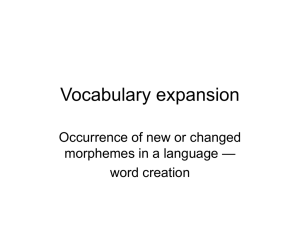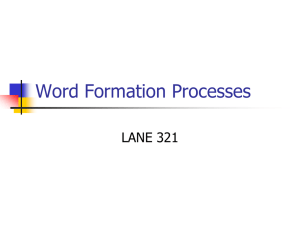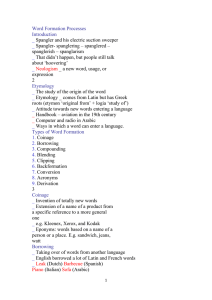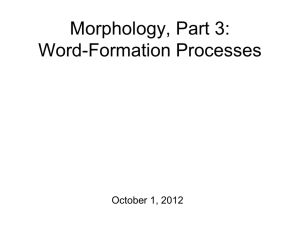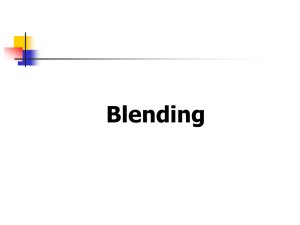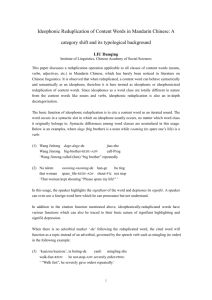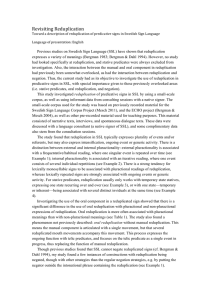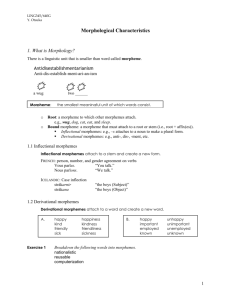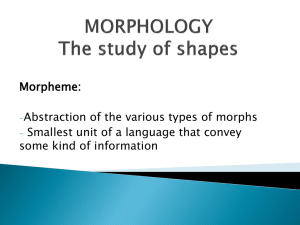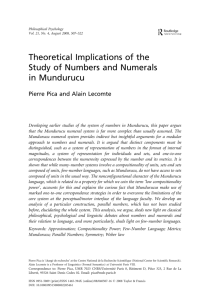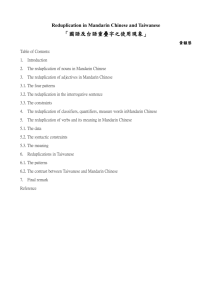WORD FORMATION PROCESS
advertisement
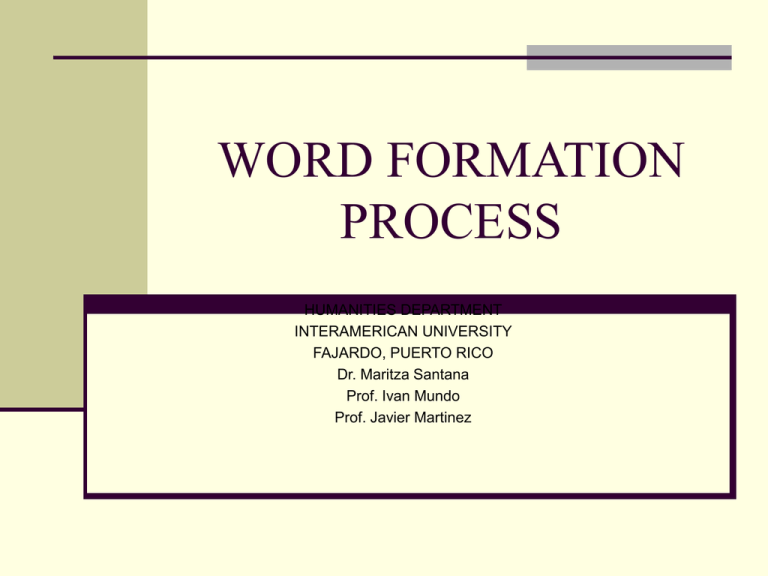
WORD FORMATION PROCESS HUMANITIES DEPARTMENT INTERAMERICAN UNIVERSITY FAJARDO, PUERTO RICO Dr. Maritza Santana Prof. Ivan Mundo Prof. Javier Martinez Word Formation Process How new words are being formed in the language The process consists of a combination of morphemes that are rule-governed (a new word is formed) PROCESSES WHERE NEW WORDS ARE FORMED Major Word Formation Processes (Processes that are formed frequently or commonly in the use of the English language) AFFIXATION Process of forming words by adding affixes to morphemes English uses only prefixes and suffixes sing + er = singer un + real = unreal COMPOUNDING Process that forms new words from two or more independent words Examples of words formed by the compounding process: girl + friend = girlfriend text + book = textbook REDUPLICATION Process of forming new words either by doubling an entire word (total reduplication) or part of a word (partial reduplication) English makes use of reduplication very sporadically Total reduplication is extremely rare! partial reduplication Humpty hocus - dumpty pocus SUPPLETION A relationship between forms of a word wherein one form cannot be phonologically or morphologically derived from the other (this process is rare). am vs. was go vs. went MINOR WORD FORMATION PROCESSES (Occur less frequently in the English language) BLENDING Process of creating a new word by combining the parts of two different words, usually the beginning of one word and the end of another. motor + hotel = motel camera + recorder = camcorder Acronyms Words created from the initial letters of several words. The difference between an initialism and an acronym is that an acronym can be pronounced as a single word instead of being spelled out by letter. BBC Broadcasting corporation WASP White anglo-saxon protestant Acronyms used by teenagers CUL - OMG CLIPPING Process of creating new words by shortening parts of a longer word. doctor doc dormitory dorm Inflection This process consists of a variation in the form of a word. The form of that word can be inflected for person, number, gender, tense,aspect, mode. Nouns: Tooth - Teeth Pronouns: He – His Verb: Go – Goes Adjectives: Low – Lower – Lowest Adverbs: Late - Lately Borrowing It is when two or more countries have contact with one other. They exchange some words, adopt them and use them as yours. Example: - Computer - Pizza - Photography (borrowed words from Greek are heavy in the sciences and technology) - Ketchup Blending Blending is a way to combine two stems of two different words in order to create a new word. Blending is divided into: Coalescence (it uses parts of each words) Ex: Smog=Smoke+fog Telescope(it uses the entire first word plus the final part of the second word) Ex:Motorcade=motor+cavalcade Flexibility It is the change of a word from one word class to another. Examples: - This jacket is a really good buy! - She has saved enough money to buy a car. Clipping It is the shortening of a longer word. Examples: Photo- Photography TV- Television Net- Internet Back formation It is a clipped form of a longer word that changes from a noun to a verb. Examples: Inspection- Inspect Communication- Communicate Scanner- Scan Derivation When a word named “root” is added by affixes that can be in front of a word as a prefix or in the end of a word as a suffix Example: Acknowledge: Ac-knowledge Knowledgeable: knowledge-able
